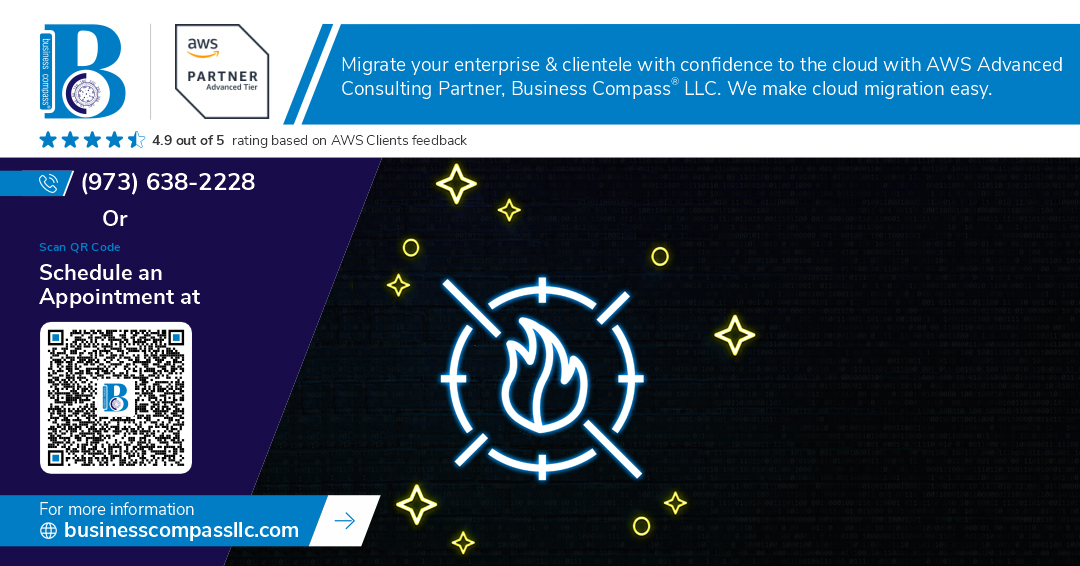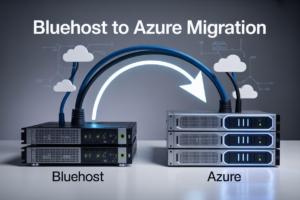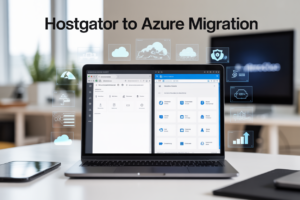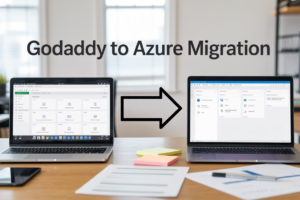Ever had that moment when your web traffic spikes and instead of celebration, you’re sweating bullets about security? DDoS attacks increased by 71% in 2023 alone, hitting when companies least expect it.
AWS Web Application Firewall (WAF) and Shield aren’t just fancy add-ons for your cloud setup—they’re the difference between business as usual and catastrophic downtime for high-traffic applications.
This guide cuts through the complexity of AWS WAF & Shield security implementation, giving you actionable steps to protect your platforms from sophisticated web threats. No fluff, just practical configurations that real security teams use.
But here’s what most tutorials miss about WAF rules that could leave your defenses with a gaping hole…
Understanding AWS Web Application Security Fundamentals
The rising threats to web applications in today’s digital landscape
Web apps are under attack like never before. In 2023 alone, DDoS attacks jumped by 31%, with the largest one hitting 3.1 Tbps. That’s enough to knock most companies offline for hours.
The scary part? These attacks are getting smarter, not just bigger. Bad actors are shifting from brute force to sophisticated layer 7 attacks that mimic legitimate traffic. These sneaky attacks fly under the radar of traditional security tools.
SQL injection, cross-site scripting, and bot traffic aren’t just security buzzwords – they’re real threats costing businesses millions. When your application goes down, you’re not just losing traffic; you’re losing customer trust that took years to build.
How AWS WAF and Shield fit within the AWS security ecosystem
AWS didn’t build WAF and Shield as standalone tools. They’re part of a comprehensive security approach that works with Amazon CloudFront, Application Load Balancer, and API Gateway.
Think of AWS WAF as your application’s bouncer, checking every request at the door. It integrates with CloudWatch for real-time monitoring and AWS Lambda for custom responses to threats.
Shield complements this by functioning as your first line of defense against massive traffic spikes. When a DDoS attack hits, Shield absorbs the impact before it reaches your application layer where WAF operates.
Key differences between AWS WAF and AWS Shield
| Feature | AWS WAF | AWS Shield |
|---|---|---|
| Primary Purpose | Application layer (L7) protection | Network/transport layer (L3/L4) protection |
| Threat Focus | SQL injection, XSS, geo-blocking | DDoS attack mitigation |
| Pricing Model | Pay per rule and request | Standard (free), Advanced (subscription) |
| Configuration | Highly customizable rules | Mostly automated protection |
| Response Time | Rule-based filtering | Automatic, near real-time |
Business benefits of implementing robust web application security
The math is simple: downtime costs money. A lot of money. For high-traffic platforms, just one hour offline can mean thousands in lost revenue.
But the benefits go beyond just keeping the lights on. Proper implementation of AWS WAF and Shield delivers:
- Customer trust reinforcement – people stick with brands they feel safe using
- Regulatory compliance without the headache
- Reduced operational overhead during attack scenarios
- Scalable protection that grows with your traffic
- Cost predictability even during attack situations
The most successful implementations don’t just react to threats – they anticipate them. By combining AWS WAF’s precision with Shield’s power, your application gains the security foundation needed to focus on what matters: delivering value to users, not fighting off attackers.
AWS WAF Deep Dive: Features and Implementation
Core components of AWS WAF and how they work together
AWS WAF has five key components that form a powerful shield for your web apps:
-
Web ACLs – These are the containers for all your protection rules. Think of them as your security command center.
-
Rules – The actual protections that examine requests and decide what to do with them.
-
Rule Groups – Bundles of rules that work together. AWS provides managed rule groups that protect against common threats like SQL injection.
-
IP Sets – Collections of IP addresses or ranges you want to block or allow.
-
Regex Pattern Sets – Groups of regular expressions to match request patterns.
These components talk to each other in a logical flow: incoming requests hit your Web ACL, which applies rules (either individual or grouped), which then check against your IP sets and pattern matches.
Setting up your first AWS WAF web ACL
Getting started with AWS WAF isn’t rocket science:
- Head to the AWS WAF console
- Click “Create web ACL”
- Name your ACL and specify the region
- Choose what to protect (CloudFront, API Gateway, or an Application Load Balancer)
- Add rule groups or create custom rules
- Set the default action (Allow or Block)
- Review and create
The trickiest part is deciding which rules to implement. Start with AWS managed rule groups for immediate protection against common vulnerabilities.
Creating and customizing WAF rules for your specific needs
WAF rules come in several flavors:
- Rate-based rules – Block IPs that send too many requests
- Geo-match rules – Block or allow traffic from specific countries
- String match rules – Look for specific patterns in headers, URLs, or body
- Size constraint rules – Block abnormally sized requests
Let’s say you’re getting hammered with requests from a specific region. You’d create a geo-match rule, select the countries to block, and add it to your web ACL.
For custom attacks, use rule statements combined with logical operators (AND, OR, NOT). This lets you create complex conditions like: “Block if request contains SQL injection pattern AND comes from outside the US.”
Integrating AWS WAF with CloudFront, ALB, and API Gateway
AWS WAF plays nicely with three main services:
| Service | Integration Benefit |
|---|---|
| CloudFront | Global edge protection, reduced latency |
| ALB | Regional protection for web apps |
| API Gateway | API-specific security controls |
For CloudFront integration, just associate your web ACL when creating a distribution or update an existing one. The same goes for ALB and API Gateway – you select the ACL during setup or add it later.
The real magic happens when you layer these services. Put WAF on CloudFront for broad protection, then add service-specific rules on your ALB or API Gateway for targeted defense.
WAF pricing considerations for high-traffic applications
AWS WAF costs can add up for high-traffic sites. You pay for:
- Web ACLs – $5/month per web ACL
- Rules – $1/month per rule
- Rule groups – $10/month per group
- Requests – $0.60 per million requests
For high-traffic applications, that last part matters most. A site with 100 million monthly requests will rack up $60 just in request fees.
Smart ways to optimize costs:
- Use rate-limiting rules to prevent traffic spikes
- Implement caching at the CloudFront level to reduce requests hitting WAF
- Consolidate rules into fewer, more comprehensive ones
- Monitor and analyze your WAF logs to identify patterns and optimize rules
The key is balancing security with cost. Sometimes it’s worth paying more for comprehensive protection, especially when a breach would cost far more.
Leveraging AWS Shield for DDoS Protection
Shield Standard vs. Shield Advanced: Choosing the right tier
AWS Shield comes in two flavors, and choosing between them isn’t just about price. It’s about your risk tolerance and how critical your application is.
| Shield Standard | Shield Advanced |
|---|---|
| Free with AWS | $3,000/month |
| Basic protection | Enhanced protection |
| Network & transport layer | + Application layer |
| No visibility | Real-time metrics |
| No support | DDoS Response Team |
Shield Standard is already working for you if you’re on AWS. It’s like the security guard that comes with your apartment building – there, but with limitations.
Shield Advanced is your private security detail. Worth every penny if you’re running critical applications that can’t afford downtime.
Automatic protections against common network and transport layer attacks
Shield blocks the nasty stuff before it even reaches your front door.
Network and transport layer attacks – those SYN floods and UDP reflection attacks that bad actors love to use – get automatically filtered. We’re talking about attacks that can flood your infrastructure with junk traffic.
The beauty? This happens without you lifting a finger. AWS’s massive network capacity absorbs these attacks, and their systems identify and block malicious traffic patterns in real-time.
For high-traffic platforms, this means business continues as usual while Shield quietly handles the garbage in the background.
Leveraging AWS Shield Advanced for application layer protection
Application layer attacks are sneakier – they mimic legitimate user behavior, making them harder to spot.
Shield Advanced works hand-in-hand with AWS WAF to stop these sophisticated attacks. Think of WAF as your bouncer checking IDs at the door while Shield Advanced manages the overall security operation.
What makes this combo powerful:
- Proactive monitoring identifies attack patterns
- Custom rules can be deployed during attacks
- Shield Advanced intelligently distinguishes between legitimate traffic spikes and attacks
- Cost protection prevents surprise AWS bills during attacks
For high-traffic sites, this layered approach ensures your application stays responsive even under heavy attack.
Working with the AWS DDoS Response Team (DRT)
When you’re under a serious attack, having experts on speed dial is priceless.
With Shield Advanced, you get access to the AWS DDoS Response Team. These folks eat, sleep, and breathe DDoS mitigation. During an attack, they’ll:
- Analyze your traffic patterns
- Create custom WAF rules specific to your attack
- Adjust your architecture for better protection
- Provide post-attack analysis to strengthen your defenses
The team can be engaged proactively too. They’ll review your architecture and help you optimize your security posture before an attack even happens.
Getting the DRT involved is simple – just open a support ticket. For those critical moments when every second counts, having AWS security veterans in your corner makes all the difference.
Architecture Patterns for Secure High-Traffic Applications
A. Reference architectures for different traffic profiles
When you’re building apps that need to handle serious traffic while staying secure, your architecture choices matter big time. Here’s what works for different traffic patterns with AWS WAF and Shield:
| Traffic Profile | Recommended Architecture |
|---|---|
| Global, steady | CloudFront + WAF (at edge) + Shield Advanced |
| Regional spikes | ALB/API Gateway + WAF (regional) + Shield Standard |
| Unpredictable | Multi-region with failover + WAF in both regions + Shield Advanced |
| Mixed content | CloudFront for static + ALB with WAF for dynamic |
Most high-traffic sites benefit from CloudFront’s global edge network coupled with WAF rules at the edge. This combo catches attacks before they even reach your origin servers.
B. Multi-layered security approach for maximum protection
Security isn’t a single gate – it’s multiple checkpoints working together.
Your AWS security layers should look like this:
- Shield Standard/Advanced at network edge (automatic for CloudFront/ALB)
- WAF with custom and managed rule sets
- Security groups limiting traffic
- Network ACLs for additional subnet protection
- Application-level validation
Don’t just rely on WAF. Combine it with proper IAM policies, network segmentation, and continuous monitoring. AWS WAF implementation is most effective when it’s part of this broader strategy.
C. Edge optimization strategies that complement security measures
Security and performance aren’t opposing forces – they can actually boost each other.
Smart edge optimization while maintaining security:
- Configure CloudFront caching to reduce origin hits (fewer potential attack targets)
- Use Lambda@Edge for lightweight WAF rule customization without latency
- Implement rate-based rules in WAF that trigger only when traffic patterns suggest attacks
- Set up bot control at the edge to filter non-human traffic
- Optimize WAF rules to minimize request evaluation time
The right edge strategy means your users get lightning-fast responses while attackers get blocked instantly.
D. Regional vs. global deployment considerations
The choice between regional and global WAF deployment isn’t one-size-fits-all.
Global deployment (CloudFront + WAF):
- Better for geographically distributed audiences
- Provides consistent rule enforcement worldwide
- Offers broader DDoS protection footprint
- More efficient for static content security
Regional deployment (ALB/API Gateway + WAF):
- Lower latency for users in specific regions
- More granular rule customization per market
- Often more cost-effective for regional applications
- Better for dynamic content requiring proximity to backends
Many high-traffic platforms need a hybrid approach – global protection with regional customizations based on traffic patterns and compliance needs.
E. High availability design principles with security in mind
High availability and rock-solid security go hand-in-hand. Your architecture needs both.
Key principles to follow:
- Deploy WAF across multiple availability zones automatically
- Use Shield Advanced with DDoS response team access during attacks
- Implement automatic failover mechanisms that maintain security posture
- Design for graceful degradation during attacks (maintain core functionality)
- Create isolation zones so compromised components don’t affect others
The most resilient architectures distribute both computing resources and security controls. If your primary region faces a volumetric attack, your security configurations should automatically protect traffic redirected to backup regions.
Monitoring and Response Strategies
A. Setting up effective logging with AWS WAF
Want to catch bad actors before they cause damage? Proper logging is your secret weapon. With AWS WAF, you’ll want to enable full logging to capture all web requests that pass through your rules.
Here’s how to set it up right:
aws wafv2 put-logging-configuration \
--resource-arn arn:aws:wafv2:us-east-1:123456789012:global/webacl/myWebACL/a1b2c3d4-5678-90ab-cdef \
--logging-configuration 'RedactedFields=[{SingleHeader={Name=authorization}}],LogDestinationConfigs=[arn:aws:firehose:us-east-1:123456789012:deliverystream/aws-waf-logs-stream]'
The most critical fields to log include:
- Request headers and body (with sensitive data redacted)
- Rule match details
- Action taken (block, count, allow)
- Timestamp and client IP
These logs become invaluable when you’re hunting down sophisticated attacks on your high-traffic platform.
B. Creating custom CloudWatch dashboards for security metrics
Dashboards make complex security data digestible. Create a custom CloudWatch dashboard that brings your AWS WAF metrics to life:

Key metrics to include:
- Blocked requests (by rule type)
- Allowed requests
- Rate-limited traffic
- Geographic distribution of requests
- Top 10 attacking IPs
Pro tip: Set up separate dashboard widgets for each critical application, giving you a bird’s-eye view of your entire security posture while allowing quick drill-downs when needed.
C. Automated incident response with AWS Lambda
When seconds matter in a security incident, automation is your best friend.
Build a Lambda function that triggers when your WAF detects suspicious activity:
def lambda_handler(event, context):
# Extract attack details from CloudWatch event
attack_ip = event['detail']['terminatingRuleMatchDetails'][0]['httpSourceIP']
# Add IP to blacklist
response = wafv2_client.update_ip_set(
Name='manual-block-list',
Scope='REGIONAL',
Id='abc123',
Addresses=[attack_ip],
LockToken='defg456'
)
# Send notification
sns_client.publish(
TopicArn='arn:aws:sns:us-east-1:123456789012:security-alerts',
Message=f'Blocked malicious IP: {attack_ip}'
)
This automation can dynamically update IP block lists, scale up resources during DDoS attacks, or trigger forensic analysis workflows.
D. Using AWS Shield Advanced detection mechanisms
Shield Advanced isn’t just reactive—it’s predictive. Its detection mechanisms spot attack patterns before they escalate.
The most powerful detection features include:
- Health-based detection (monitors application health metrics)
- Layer 7 attack fingerprinting
- Proactive engagement (AWS DDoS Response Team)
Configure Shield’s sensitivity thresholds based on your normal traffic patterns. Too loose, and attacks slip through. Too tight, and you’ll drown in false positives.
AWS Shield’s cost optimization trick? Enable cost protection to prevent surprise bills during large-scale attacks.
Optimizing WAF Performance for High-Traffic Workloads
Fine-tuning WAF rules to prevent performance bottlenecks
Want to know what kills web traffic faster than bad content? Sluggish security controls. AWS WAF is powerful, but poorly configured rules will tank your performance.
Start by auditing your rule sets. Those complex regex patterns? They’re CPU-intensive beasts. Replace them with simpler string matches where possible. Your users won’t notice the security difference, but they’ll definitely appreciate the speed boost.
Group similar rules into rule groups to reduce evaluation overhead. AWS processes these more efficiently than scattered individual rules.
# Example of simplified rule matching
# Instead of this CPU-intensive regex:
/^(.*)(eval\(|script>|<script|alert\(|document\.cookie)(.*)$/i
# Use targeted string matches:
"eval(", "<script", "script>", "alert(", "document.cookie"
Scope your rules precisely. Global rules checking every request? That’s asking for trouble. Target specific URI paths that actually need protection instead.
Rate-limiting strategies that balance security and user experience
Rate limiting isn’t just about blocking bad actors. It’s about making sure legitimate users don’t get caught in the crossfire.
Smart rate limiting means thinking in layers:
- Set generous limits for normal paths (product pages, blogs)
- Tighter controls for sensitive areas (login, checkout, APIs)
- Custom rules for high-value customers via header identification
The trick? Implement progressive throttling instead of instant blocks. First warn, then delay, then temporarily block. This catches bots while giving real users a chance to back off.
Cache optimization with CloudFront and WAF
CloudFront and WAF together are performance magic. The secret is proper cache configuration.
First, set aggressive cache policies in CloudFront for static content. This keeps requests from even hitting your WAF.
Next, use origin request policies to only forward headers WAF actually needs to evaluate. Each unnecessary header reduces cache efficiency.
# Headers to forward to WAF (example)
- Host
- User-Agent
- X-Forwarded-For
Cache invalidation strategy matters too. Use targeted invalidations rather than flushing everything. This maintains protection while minimizing performance impact.
Testing your security controls under load
Paper-perfect security means nothing if it crumbles under real traffic. Load testing your WAF configuration isn’t optional.
Create realistic traffic patterns using tools like Locust or AWS Distributed Load Testing. Include both legitimate traffic and attack patterns.
Monitor these key metrics:
- Latency increases during spikes
- Rule evaluation time
- Block/allow ratio changes under load
- False positives under stress
Build a “panic button” process to quickly disable problematic rules if performance tanks during major traffic events. Having this ready beats scrambling when your site is already struggling.
Real-World Implementation Case Studies
A. E-commerce platform securing holiday season traffic spikes
Ever seen what happens when Black Friday hits an unprepared e-commerce site? Not pretty.
One major retailer implemented AWS WAF with custom rate-based rules that automatically scaled during their holiday rush. Their traffic jumped 400% during Cyber Monday, but their security held firm while competitors crumbled under DDoS attacks.
They built bot detection rules that differentiated between legitimate shoppers and automated threats. The most brilliant part? They configured AWS Shield Advanced specifically to recognize their normal traffic patterns so it wouldn’t flag the genuine holiday surge as an attack.
B. Media streaming service protecting against botnet attacks
A streaming giant faced repeated botnet attacks targeting their API endpoints. Traditional solutions kept blocking legitimate users.
Their game-changer was implementing AWS WAF with behavior-based pattern recognition. They analyzed request signatures across multiple dimensions—IP reputation, request frequency, and geographic anomalies—to spot the bots while keeping real viewers streaming.
Their custom rule sets reduced false positives by 87% while blocking sophisticated bot networks that rotated thousands of IP addresses.
C. SaaS application scaling security with growing user base
A B2B SaaS platform saw their user base triple in six months. Great for business, terrifying for security.
They implemented a tiered AWS WAF approach with baseline protections for all traffic and enhanced scrutiny for sensitive operations. The clever bit was how they integrated AWS WAF with their CI/CD pipeline—automatically updating security rules with each new feature release.
This proactive approach prevented security from becoming the bottleneck as they scaled. Genius move: they used AWS WAF logs with CloudWatch to identify potential security issues before they became problems.
D. Financial services compliance requirements in high-security environments
Banking isn’t just about security—it’s about proving your security to regulators.
One financial institution deployed AWS WAF with granular logging and reporting specifically designed to demonstrate PCI-DSS and SOC2 compliance. They built custom rules addressing specific regulatory requirements and automated the generation of compliance reports.
Their security architecture included geofencing certain high-risk transactions and implementing stepped-up authentication triggered by AWS WAF rules when suspicious patterns emerged.
The compliance team’s favorite feature? Their AWS WAF dashboard showing real-time threat mitigation metrics they could show to auditors.
E. Gaming platform defending against coordinated attacks
Online gaming attracts some of the most determined attackers around.
A major gaming platform used a combination of AWS WAF and Shield to defend against coordinated attacks targeting user authentication and in-game economies. They implemented machine learning-based anomaly detection that could identify attack patterns even when distributed across thousands of seemingly legitimate accounts.
During a major DDoS attack, their AWS Shield configuration automatically directed traffic through AWS scrubbing centers, keeping their platform online while competitors went down.
The security team built custom rate limiting that adapted to different game activities—less restrictive during normal gameplay, more aggressive during sensitive transactions.
AWS WAF and Shield serve as essential pillars for securing high-traffic web applications in today’s threat landscape. By implementing WAF’s customizable rules, leveraging Shield’s DDoS protection capabilities, and following the architecture patterns outlined above, organizations can significantly enhance their security posture while maintaining optimal performance. The monitoring and response strategies discussed provide the visibility needed to continuously improve your security implementation.
As you embark on implementing these security solutions for your own high-traffic platforms, remember that security is an ongoing journey rather than a destination. Start with the fundamental protections, continually measure your effectiveness, and gradually optimize your implementation based on your specific traffic patterns and threats. The case studies demonstrate that even the most complex, high-volume applications can achieve both robust security and exceptional performance when AWS WAF and Shield are properly deployed.


















